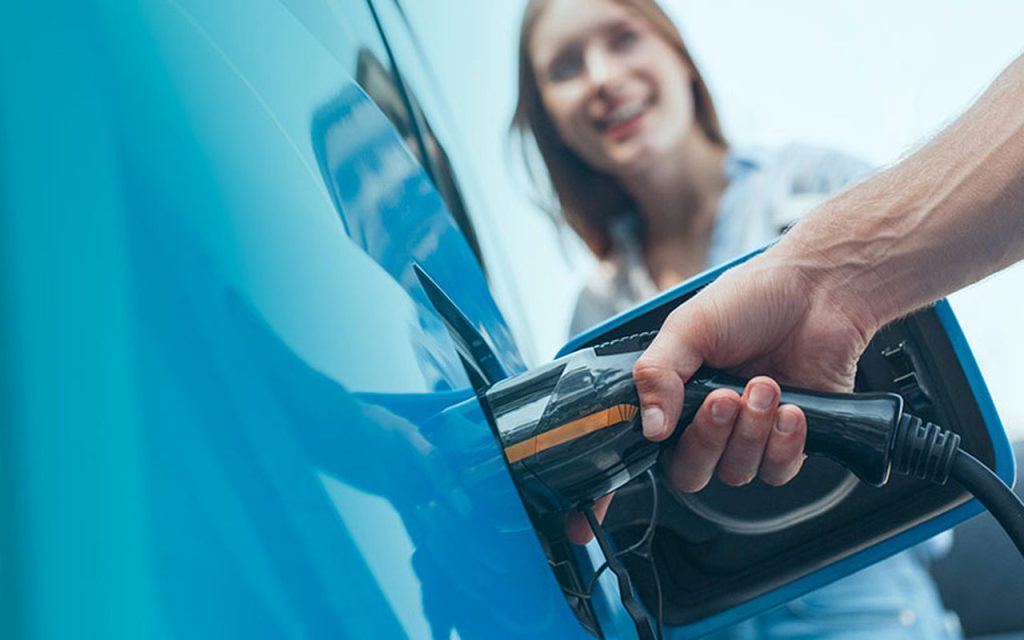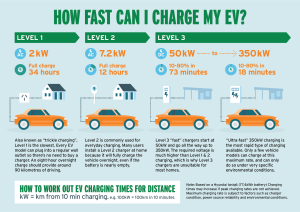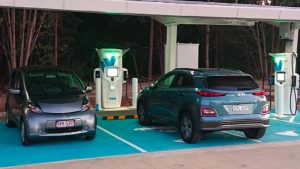ARENA targets better, more frequent EV charging stations
A new $70 million Driving the Nation funding pool aims to support the uptake of EVs through innovation around public charging stations.

Australian drivers are currently amongst the most reluctant in the world to take up fully electric vehicles (EVs).
Chinese drivers led the way in 2022, buying an estimated 4.4 million EVs, or around 22 per cent of China’s new car sales.
Over the same period, more than 12 per cent of new car purchases in Europe were an EV. The same figure approached 6 per cent in the USA, while it reached almost 9 per cent in Canada.
In Australia, we bought just 33,416 new EVs in 2022, according to the Federal Chamber of Automotive industries. Although numbers are up in early 2023, that’s only 3.1 per cent of Australia’s more than one million new car sales.
Meanwhile, Australia’s petrol, diesel and fuelled light vehicles are responsible for about 11 per cent of the nation’s greenhouse gas emissions.
The Government in April 2023 released its National Electric Vehicle Strategy which “looks at reducing barriers to electric vehicle uptake.”
Minister for Climate Change and Energy Chris Bowen said: “This strategy provides the coordination and leadership to drive down costs and improve infrastructure so–that we get more affordable and accessible electric vehicles on the market.”
Among those significant barriers to the uptake of EVs in Australia is a lack of charging infrastructure.
Now, ARENA has announced $70 million in funding aimed at boosting the availability of charging stations across Australia.
Specifically, this pool of funding will initially support innovation in both public charging facilities and the management of charging.
What are public charging stations?

Charging opportunities for electric vehicles come in many flavours. For instance, different charging times, different voltages and currents, and various types of locations.
Just to complicate things, Tesla, Australia’s top-selling EV manufacturer, has its own proprietary Supercharger network. The US-based company has recently started to open its Australian network of around 50 Supercharger to non-Tesla vehicles but is experiencing delays.
Low-power, Level 1 charging is available for all EVs simply by plugging straight into a wall socket at home. An overnight “trickle charge” could add around 90km of driving range. Fully charging an EV might take 30 to 40 hours.
Level 2, AC chargers have a higher power rating, up to 22kW. They come in domestic or public versions. An overnight connection at home might fully charge an EV from empty.
Level 3, fast DC chargers start at a 50kW power rating. They will typically add 150km of driving range for every hour a compatible car is connected. To charge from nearly empty to nearly full (from 10 to 80 per cent is a common industry measurement) would take between 70 to 80 minutes.
Ultra-fast, sometimes known as hyper-fast, DC charging points operate at 350 kW. In the right conditions, some compatible EVs could fully recharge in 10 to 15 minutes.
According to the Electric Vehicle Council, a national body representing interested parties in the electric vehicle industry in Australia, in December 2022, there were fewer than 2400 public charging locations. Of those, just 365 had fast chargers, and only 99 offered ultra-fast chargers.
Compare that with Canada, which has a similar land size, albeit a slightly larger population. In 2022, Canada had more than 8700 charging stations. That number included almost 1500 fast or ultra-fast DC charging stations.
Faster is better, right?

The simple answer is … not that simple. It depends on many factors such as cost, availability, kilometres travelled, EV model, available off-road time.
For people who can charge at home or office, a low-speed, low-cost option may still be the preferred choice.
For instance, if an office can install five Level-1 chargers for the cost of one Level-2 charger, that might be the better choice since the average vehicle in Australia travels only 36 km daily.
People who can’t charge at home or work, or people on road trips, need different solutions.
But planning for “pit stop” or fast petrol station-style charging points is complicated because all EVs are not made equal.
There are relatively few EV models that can take advantage of 350 kW charging.
Even if more 350 kW-compatible EV models roll out, the short-term need for hyper-fast chargers may not change significantly.
A 2021 report assessing the needs for public charging infrastructure in the US predicts average charging capacity will increase from 67 kW in 2020, to 94 kW in 2025, and 162 kW by 2030.
Driving the Nation Fund
The Government in its 2022-23 Federal Budget tasked ARENA with administering $146.1 million over the next five years as part of its larger Driving the Nation Fund.
The $70 million new funding round will focus on innovative projects in public charging and managing charging. It will build on ARENA’s previous work on electric vehicles to support projects to decarbonise road transport.
The funding is intended to support projects to expand electric vehicle charging and hydrogen refuelling infrastructure across Australia.
ARENA will also retain agency over $249.7 million, previously allocated under the Future Fuels Program. To avoid confusion, ARENA’s Future Fuels Program funded projects will be delivered under Driving the Nation Program.
ARENA Acting CEO Chris Faris said Driving the Nation will build upon ARENA’s previous support for electric vehicle charging across Australia.
“With light vehicles accounting for around 11 per cent of Australian greenhouse emissions, it is vital that we continue to fast track the transition to electric vehicles over the next decade.”
“As more EVs become available to Australians and their costs decline, it’s important that the availability of high-quality charging infrastructure keeps pace with the take-up of EVs”.
“The Driving the Nation Program will help by driving innovation in public charging, finding better and smarter ways for everyone to be able to access EV charging, even if they can’t charge at home.
“We want more people to be comfortable to make the choice for their next vehicle purchase to be an EV.”
For more information on the Driving the Nation focus areas and how to apply, visit ARENA’s funding page.
LIKE THIS STORY? SIGN UP TO OUR NEWSLETTER

ARENA